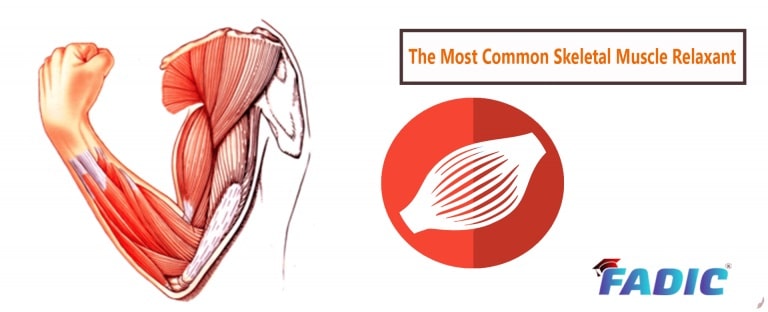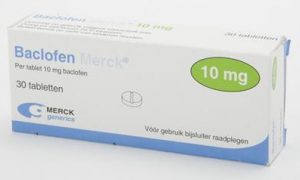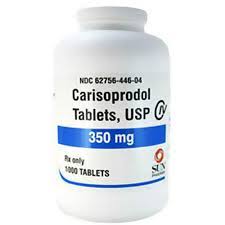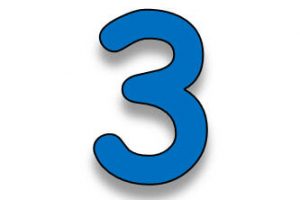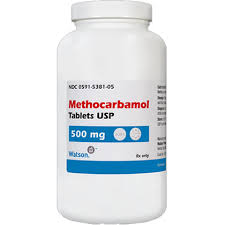Muscle Relaxants: List of Common Muscle Relaxants
Muscle Relaxants: List of Common Muscle Relaxers

The Most Famous 4 drugs most Commonly used in the Skeletal Muscle Relaxant are:

Baclofen

- Brand Names: Gablofen
- Therapeutic Category: Skeletal Muscle Relaxant
- Dosage Forms: Tablet, oral/ Solution (Intrathecal)
- Use: Labeled Indications: Spasticity:
- Oral: Management of reversible spasticity associated with multiple sclerosis or spinal cord lesions
- Intrathecal: Management of severe spasticity of spinal cord origin
- Dosing : Adult: 5 mg 3 times daily; may increase by 5 mg per dose every 3 days
- Usual dosage range: 40 to 80 mg daily. Do not exceed 80 mg daily (20 mg 4 times daily).
- Pediatric : Infants ≥4 months and Children <2 years: 10 to 20 mg daily divided every 8 hours; begin at low end of range and titrate dose to patient response
- Children 2 to 7 years: 20 to 40 mg daily divided every 8 hours
- Children ≥8 years and Adolescents: 30 to 40 mg daily divided every 8 hours
- Dose Adjustments
- Renal Impairment:. No dosage adjustment.
- Hepatic Impairment: No dosage adjustment.
- Adverse Drug Interaction:
Hypotonia, drowsiness, confusion, headache, vomiting, Nausea, Hypotension
- Pharmacodynamics/Kinetics:
- Bioavailability: Oral: 74%
- Time to peak: 1 hour
- Metabolism: Hepatic
- Half-life elimination: 3.75 ± 0.96 hours
- Important Notes:
- CNS depression: May cause CNS depression, which may impair physical or mental abilities
- May cause acute urinary retention so use with caution in patients with urinary obstruction.
- Pregnancy & Lactation: Pregnancy category C/ present in breast milk
- Drug safety issue:
- Baclofen may be confused with Bactroban
- Lioresal may be confused with lisinopril, Lotensin

Carisoprodol

- Brand Names: Soma
- Therapeutic Category: Skeletal Muscle Relaxants
- Dosage Forms: Tablet, oral
- Use: Labeled Indications: Musculoskeletal conditions: Short-term (2 to 3 weeks) treatment of discomfort associated with acute painful musculoskeletal conditions.
- Dosing : Adult: Musculoskeletal conditions: Oral: 250 to 350 mg 3 times daily and at bedtime for a maximum recommended duration of 2 to 3 weeks.
- Pediatric : Adolescents ≥16 years: Oral: 250 to 350 mg 3 times daily and at bedtime (ie, 4 daily doses); maximum daily dose: 1,400 mg/day; maximum duration of therapy: 3 weeks
- Dose Adjustments
- Renal Impairment:. No dosage adjustment.
- Hepatic Impairment: No dosage adjustment.
- Adverse Drug Interaction:
Dizziness, drowsiness, headache
- Pharmacodynamics/Kinetics:
- Onset of action: Rapid
- Duration: 4 to 6 hours
- Metabolism: Hepatic
- Half-life elimination: 2 hours
- Important Notes:
- CNS depression: May cause CNS depression, which may impair physical or mental abilities
- Inappropriate medication to be avoided in patients 65 years and older (independent of diagnosis or condition) because most muscle relaxants are poorly tolerated by older adults due to anticholinergic effects caused by some muscle relaxants.
- Pregnancy & Lactation: Pregnancy category C/ present in breast milk

Cyclobenzaprine

- Brand Names: Fexmid
- Therapeutic Category: Skeletal Muscle Relaxants
- Dosage Forms: Tablet, oral
- Use: Labeled Indications: Muscle spasm: As an adjunct to rest and physical therapy for short-term (2 to 3 weeks) relief of muscle spasm associated with acute, painful musculoskeletal conditions.
- Off-Label use: Acute Jaw pain due to temporomandibular disorder
- Dosing : Adult: Muscle spasm: Immediate release: Initial: 5 mg 3 times daily; may increase up to 10 mg 3 times daily if needed
- Pediatric : Adolescents ≥15 years: Oral: Immediate release tablet: Initial: 5 mg 3 times daily; may increase up to 10 mg 3 times daily if needed. Geriatric: Initial: 5 mg; titrate dose slowly and consider less frequent dosing.
- Dose Adjustments
- Renal Impairment:. No dosage adjustment.
- Hepatic Impairment: Mild impairment: Initial: 5 mg; use with caution; titrate slowly and consider less frequent dosing
- Moderate to severe impairment: Use not recommended.
- Adverse Drug Interaction:
Xerostomia ,confusion, dizziness, drowsiness, headache, Fatigue
- Pharmacodynamics/Kinetics:
- Onset of action: Immediate release: Within 1 hour
- Duration of action: Immediate release: 12 to 24 hours
- Metabolism: Hepatic
- Half-life elimination: Normal hepatic function: Range: 8 to 37 hours
- Important Notes:
- CNS depression: May cause CNS depression, which may impair physical or mental abilities
- Use with caution in patients with angle-closure glaucoma, increased intraocular pressure, or urinary frequency/hesitancy.
- Pregnancy & Lactation: Pregnancy category B/ not known if present in breast milk
- Drug safety issue:
- Cyclobenzaprine may be confused with cycloSERINE, cyproheptadine
- Flexeril may be confused with Floxin

Methocarbamol

- Brand Names: Robaxin
- Therapeutic Category: Skeletal Muscle Relaxants
- Dosage Forms: Solution, injection/ Tablet, oral
- Use: Labeled Indications: Adjunctive treatment of muscle spasm associated with acute painful musculoskeletal conditions
- Dosing : Adult: Muscle spasm: Oral: 1.5 g 4 times/day for 2-3 days (up to 8 g/day may be given in severe conditions), then decrease to 4-4.5 g/day in 3-6 divided doses
- IM, IV: Initial: 1 g; may repeat every 8 hours if oral administration not possible; maximum dose: 3 g/day for no more than 3 consecutive days.
- Pediatric : Muscle spasm: Adolescents ≥16 years: Oral: 1,500 mg 4 times daily for 2 to 3 days; maximum daily dose: 8 g/day
- Geriatric: If using for muscle spasm, consider starting at a lower dose.
- Dose Adjustments
- Renal Impairment:. No dosage adjustment.
- Hepatic Impairment: No dosage adjustment.
- Adverse Drug Interaction:
Bradycardia, flushing, hypotension, syncope, thrombophlebitis , confusion, dizziness, drowsiness, headache, insomnia
- Pharmacodynamics/Kinetics:
- Onset of action: 30 minutes
- Time to peak, serum: Oral: 1 to 2 hours
- Half-life elimination: 1 to 2 hours
- Metabolism: Hepatic
- Important Notes:
- CNS depression: May cause CNS depression, which may impair physical or mental abilities; patients must be cautioned about performing tasks which require mental alertness
- Pregnancy & Lactation: Pregnancy category C/ not known if present in breast milk
- Drug safety issue:
- Methocarbamol may be confused with mephobarbital
- Robaxin may be confused with ribavirin, Skelaxin
Read More
Copyright ©: All content on FADIC Website, including medical opinion and any other health-related information, and drug Informtation is for informational purposes only

 Log in
Log in Sign up
Sign up